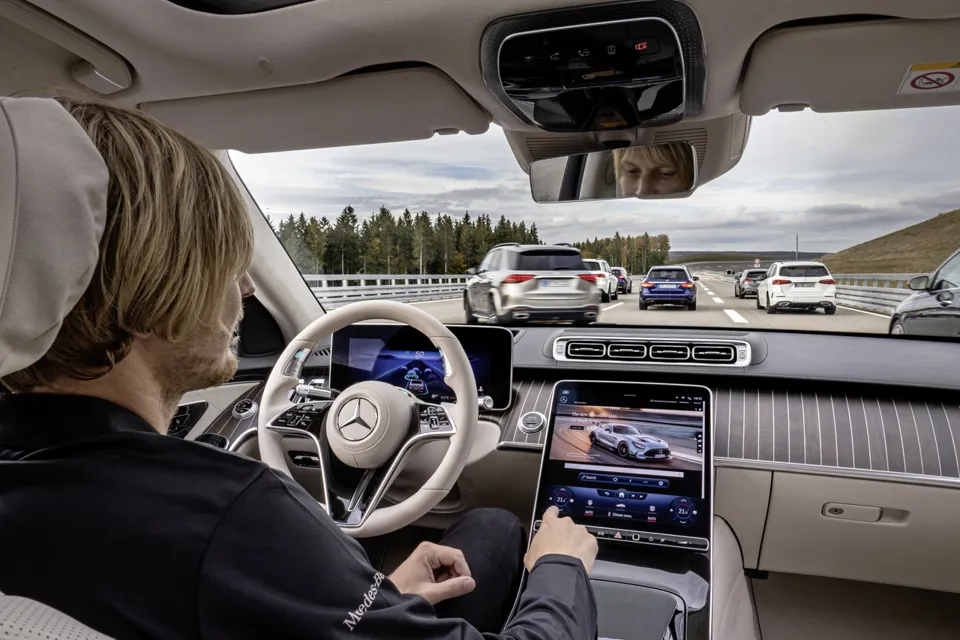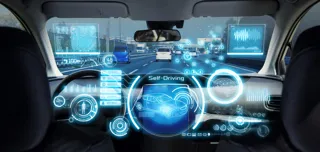The Association of Fleet Professionals (AFP) and key industry stakeholders are expressing concern over the Government’s plan to roll out self-driving vehicles by 2025.
The Government revealed new legislation to pave the way for introducing self-driving vehicles on UK roads within the next three years. It has allocated £100 million to deliver its autonomous ambitions for research to support safety developments and inform more detailed legislation.
That could include researching the performance of self-driving cars in poor weather conditions and how they interact with pedestrians, other vehicles and cyclists.
It says some vehicles, including cars, coaches and lorries, with self-driving features could be operating on motorways as soon as next year.
Ministers say the move will enable the UK to take full advantage of the emerging market of self-driving vehicles, which could create up to 38,000 jobs and could be worth an estimated £42 billion.
However, Paul Hollick, AFP chair, told Fleet News: “A lot of our members are struggling to see how regular vehicles and self-driving vehicles are going to operate at the same time on the roads together.
“What scares us is that we know from the total population of drivers within fleets, there will be some that cut corners. Some drivers will be confused about what this technology can – and can’t – do.
“If drivers think a vehicle is fully self-driving, when it’s not, that could land us in some hot water when it comes to duty of care.”
A particular passage from the Government’s recent announcement caused the most alarm for the AFP, stating that “self-driving vehicles could revolutionise public transport and passenger travel, especially for those who don’t drive”.
This paints a picture of vehicles on the road with no input from drivers and no expectation to take back the wheel.
That is one potential outcome with self-driving technology, but the pace of change is what most concerns fleet operators.
Matthew Avery, Thatcham director of research, made it clear that the Government announcement was a summary of all the work that had been done previously to pave the way for more self-driving technologies, but it doesn’t mean this technology will be widespread by 2025.
He said: “The announcement set out the things that need to change and be addressed. We have many of the elements in place now that will enable the sale and use of self-driving cars.
“Delivery is another question. It’s doubtful whether we’ll see mainstream self-driving Level 3 features on the roads in the UK before 2025. It’s going to be few and far between.”
Avery expects self-driving technology to initially be limited within geofenced locations such as a university campus or delivery depot. He said there is also exciting Level 4 technology (where the driver does not even need to be in the car) that could be deployed at low speeds in airport car parks for full self-driving parking.
Mercedes-Benz was the first car manufacturer to receive approval for its Level 3 Drive Pilot Automated Lane-Keeping System (ALKS) technology on its S-Class at the end of 2021.
The technology is also available as an option on its electric EQS. However, its Drive Pilot is currently limited to a maximum speed of 37mph and can only be used on German motorways in traffic queues.
It’s a very specific use case and drivers still have to be alert and ready to take back the wheel if needed.
Avery said that such has been the challenge around the type approval process for Level 3 systems that it has led to revisions to the rules that will expand the capability to allow future systems to reach higher speeds and for vehicles to self-drive between lanes.
As of January 2023, car manufacturers will be able to seek type approval to launch Level 3 technologies with expanded self-driving capabilities.
Avery said: “A lot of car manufacturers have been holding back because of the difficult type approval process and so that’s why we haven’t really seen a huge number of vehicles on the street with Level 3 features.”
Matt Hammond, Altrad head of fleet and plant, is sceptical about how Level 3 technology can be successfully introduced to UK roads.
He said: “One of the statements is that the benefit is to enhance the mobility of people that can’t drive. It worries me when you look at the state of UK roads and infrastructure.
“Self-driving technology might reduce driver error, but what about vehicle error? Won’t that just be shifting the blame?”
Mercedes-Benz has said it will accept liability in cases where any incidents are caused by a fault with its technology, but not when the driver has “failed to comply with their duty of care”.
The Law Commission of England and Wales and the Scottish Law Commission has already made proposals that confirm that when a car is authorised by a regulatory agency as having “self-driving features” and those features are in-use, the person in the driving seat would no longer be responsible for how the car drives. Instead, the company or body that obtained the authorisation – typically the vehicle manufacturer should face regulatory sanctions if anything goes wrong.
Hammond says from his fleet’s perspective, Altrad will be steering clear of all Level 3 technology on vehicles as there are still too many unknowns.
Thatcham wants to see mandatory video tutorials on stationary vehicle infotainment systems on all advanced driver-assistance systems (ADAS) and self-driving technologies. Ideally, drivers would have to notify that these videos have been watched before the systems would be able to be used.
The AFP has already called for vehicle handover standards at franchised car dealerships to be put in place for full demonstrations of any ADAS.
Hollick said: “We wanted to make sure there is some more robustness to make sure drivers understand these systems. We would also like to see a clearer roadmap on self-driving over the next 15 years.
“What is the plan for self-parking in cities like London? What’s happening with the motorways with five-lane expansions, and will self-driving-only lanes be introduced in the medium term?”
Avery said the biggest challenge facing self-driving technology is consumer understanding. He added: “Consumer understanding and perception is the major issue. The technology is available and it’s there. The biggest concern is the confusion and potential misuse which could lead to a backlash against the technology. That could actually set self-driving back 10 years.
“We need to be very careful, and OEMs have a key part to play to make sure their marketing is clear and they’re not overselling the capability.”






















Login to comment
Comments
No comments have been made yet.